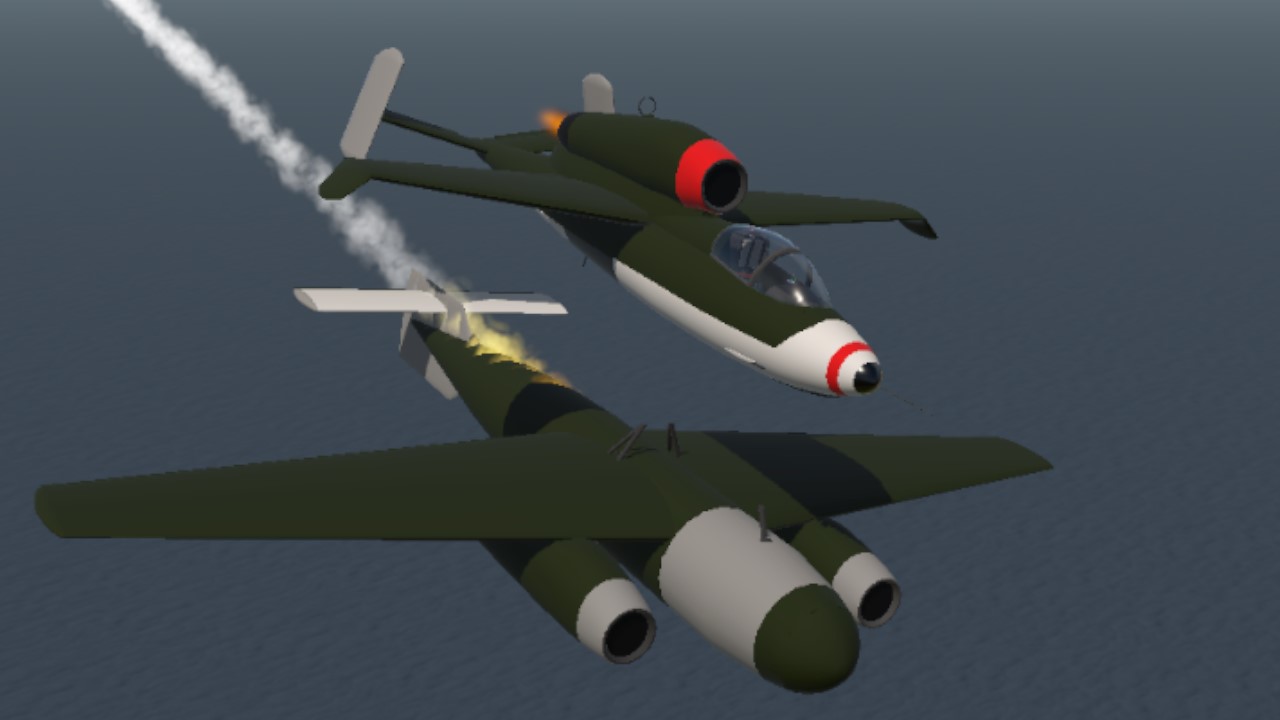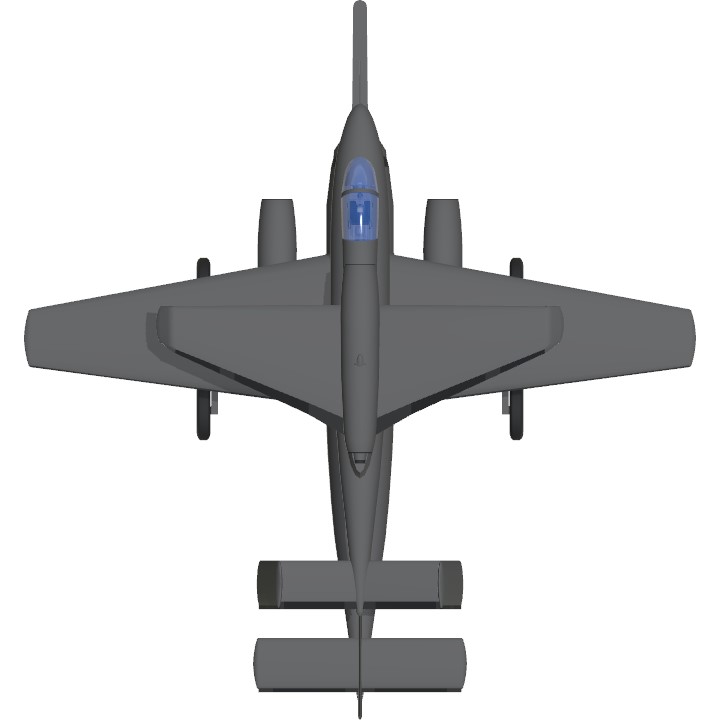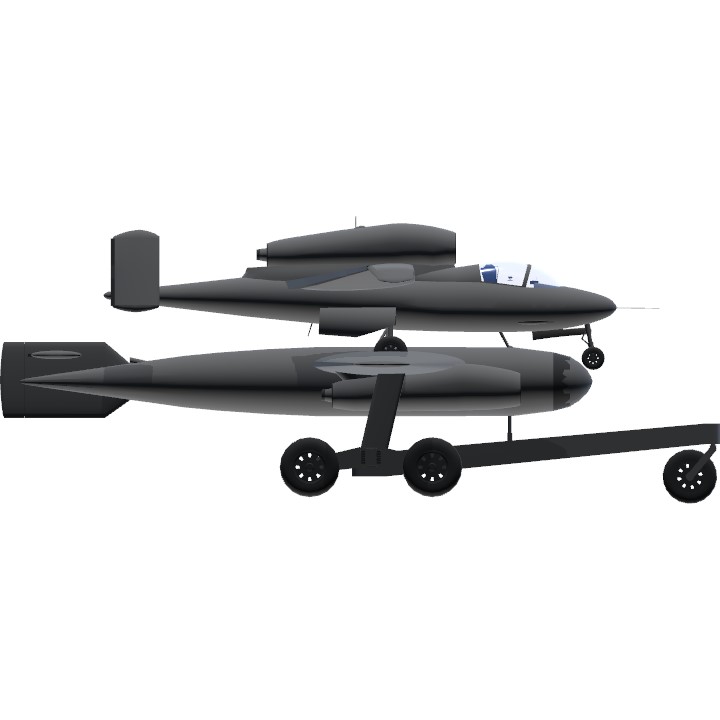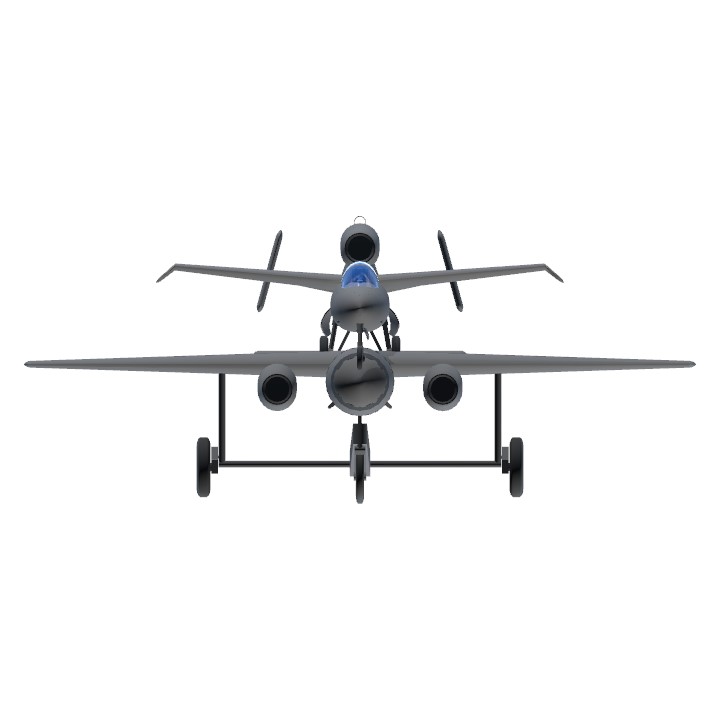DESCRIPTION
We have created the Mistel 5, a combination of the He162 jet fighter, a variation of the Mistel, a special bombing system developed in Germany during World War II, and the ArE.377a glide bomb! The ArE.377a can be guided to a target by inertial guidance or autonomous guidance!


OPERATION EXPLANATION
Activate1:Open Canopy
Activate2:Engine OFF/ON
Activate3:Bail out
Activate4:Ar E.377 Release
Activate8:Oil press cut
VTOL: Flap
Trim: Pitch Trim


Safety equipement
The aircraft is equipped with an ejection seat



take off
When taking off, please deploy the He162 flaps to the maximum and retract the landing gear at a speed of over 300 km/h. The dolly will be detached at the same time.

History
The ArE.377 was an unpowered guided glide bomb developed by the German Arado Flugzeugwerke. The E.377 was intended to be suspended under the fuselage of an Ar.234C bomber. Since the Ar.234c would be unable to use its own landing gear with the E.377 suspended under its fuselage, a removable trolley was attached to the E.377 for takeoff, allowing it to take off by gliding.
The Ar.234 with the E.377 suspended would detach the E.377 at an appropriate position relative to the target, such as a ship, and then have it hit the target via radio guidance from the Ar.234c.
Mistel 5 was a combination of the He 162 and the E.377, but the E.377 that was planned to be used for this Mistel 5 could not fly with the thrust of the He 162's main engine BMW 003 alone, so it was a derivative called the E.377a, which was equipped with one BMW 003, which is thought to have been diverted from the He 162, on each side of the main wing as auxiliary power.
As for the Mistel 5, it would be difficult for the He 162 pilot to guide and control it at the same time, and due to reasons such as the lack of space to install the guidance system and the narrow visibility of the He 162, the E.377a was probably not radio-guided, and was intended to enter the target by inertial flight or to ram the target by manning the E.377a. It is thought that the latter was not carried out due to opposition from Germany's top leadership during World War II.
Bibliography
bibliography: 1:Arado Ar E.377 Luft '46 entry
URL:[https://www.luft46.com]
(https://www.luft46.com)
2:Wikipedia Arado E.377
URL:https://en.m.wikipedia.org/wiki/Arado_E.377
Specifications
General Characteristics
- Created On iOS
- Wingspan 39.9ft (12.2m)
- Length 42.8ft (13.0m)
- Height 17.1ft (5.2m)
- Empty Weight 17,091lbs (7,752kg)
- Loaded Weight 19,437lbs (8,816kg)
Performance
- Power/Weight Ratio 0.754
- Wing Loading 50.4lbs/ft2 (246.3kg/m2)
- Wing Area 385.4ft2 (35.8m2)
- Drag Points 4461
Parts
- Number of Parts 315
- Control Surfaces 13
- Performance Cost 1,580




